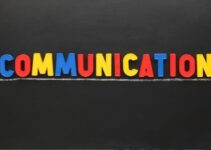What Is Communication Feedback?
Communication is the process of sending a message to a receiver with the goal of getting back feedback. On the other hand, feedback is a reply or response of the recipient to the conveyer of the message.
Feedback is the final stage of communication, and it’s also the essential part—without it, the communication process becomes incomplete. Therefore, feedback may be a written message, oral, action, or sometimes silence.
Sending a message is only half of the communication stage. When the information sent gets to the recipient, they have to decode it and respond to the sender to complete the communication cycle.
Feedback is vital as it helps the message’s sender evaluate the quality and effectiveness of the information shared. A reply is always necessary to clarify any issues, especially when parties in the communication process didn’t understand the message.
Causes of Poor Communication Feedback
Let’s agree—Feedback is a crucial part of communication as it makes it complete. The receiver of any information must provide feedback once the information is with them. In other words, without feedback, the communication process will not be complete. That said, let’s look at some of the causes of poor feedback and why you should avoid them:
- Over-Reliance on Formal Communication Processes— In a typical office set-up, most employees communicate through formal channels. Formal channels are a great way to achieve professionalism to provide quality services. However, too much use of formal channels can deter some clients or even employees from giving adequate feedback.
- Sanctioned Communication—Too much formalization of the communication process through bindings, rules, and regulations is referred to as sanctioned communication. Such regulations and rules deter effective feedback as employees are forced to hold some information back. Most employees will not want to be penalized for disregarding the set-out regulations, so they’ll instead choose to withhold their feedback.
- Poor Organizational Climate—When the internal functioning environment, social climate organization, and interpersonal relationships effectuate a free-flowing communication process, it will be easy to encounter ineffective feedback. The whole communication process will also be in danger as feedback is required for there to be an effective communication process.
21 Examples of Feedback in Communication
Feedback is mainly designed to ensure and assist the sender in verifying the message. This can be through everyday informal communication or even a formal process that involves business agreements. Below are feedback examples that should guide you in streamlining your communication processes at the workplace.
1.Mandatory Positive
Let’s face it when dealing with a colleague or a co-worker. It’s hard to always be sincere with your feedback when they present a project before you, even though it might not be up to standard. Most of the time, you’ll give positive feedback so that you don’t get on their wrong side.
Mandatory positive is always done by mainly focusing on the positives or the parts they performed exemplary well and giving less attention to their failures.
2. Positive
Positive feedback is meant for us to genuinely communicate and showcase our talents and exemplary contributions in any task we perform. It can be anyone who likes solving problems, has a good work ratio, or is mainly dedicated to making everyone around him improve on their skill and techniques.
3. Constructive
Constructive feedback mainly helps people identify or develop ways of improving themselves and the things around them. Constructive feedback should be seen as an opportunity rather than as criticism to put someone down. To take constructive feedback positively, we need to have an open mind so that we get better.
4. Direct Criticism
Direct criticism is always relayed without fear of what the information issued can do to someone. It’s mainly used where someone does not improve despite many attempts to improve their situation through constructive feedback. When a problem persists, direct criticism is the only way out.
5. Face Saving
Face solving feedback is supposed to make someone feel better about themselves despite having endured failure in a particular project or task. It’s an encouragement tool that, when used appropriately, can do wonders in lifting someone by building their confidence and self-belief.
6. Measured Positive
In most instances, formal feedback incorporates measurement like business metrics which helps numbers be coloured with language to visualize how they map to performance. It is vital even though they are downplayed.
7. Measured Negative
Measured negative feedback is usually presented negatively when someone fails to close down significant deals frequently. The truth is that it’s not ordinarily fun as it is majorly direct and straight to the point. Those in this situation should take the feedback positively and get better.
8. Technical
Technical feedback is generally related to technical skills and work. It’s mainly used to troubleshoot problems to solve critical matters in good time. This is why technical feedback is so important in society.
9. Communication
This type of feedback is linked with the communication of information and social processes like influencing. It helps to get customer feedback so that you can make changes in your business and improve sales. Communication feedback is highly regarded in the social world, and when used well, it can be very effective.
10. Management
Management is the act of controlling resources and guiding people effectively. So feedback in this area is majorly based on the business result or end product and what stakeholders think about some issues that you might have proposed to them. It is entirely essential to manage an organization properly.
11. Leadership
Leadership is showing control over certain things or people and making them move in one direction with you as their leader. It’s a natural feeling that mainly occurs without a formal authority which means that just anybody can be a leader at any point if they have the qualities required.
12. Customer Services
When you have firm control over customer service feedback or results, it becomes easy for you to have a genuine interaction with your customers regarding your products. Good feedback means that you are trusted, and therefore if you’re a business person, strive to communicate well for better feedback.
13. Learning Formative
Feedback is critical for employee’s or student’s development. Formative feedback is part of the learning process, and it’s used when trying to achieve specific objectives. It makes people more productive and demands more of themselves.
14. Learning Summative
Learning summative is very important and influential in commuting results of learning or a particular task or project so that an individual can improve in the future. It’s meant to lift people’s spirits to do better in the areas they didn’t perform particularly well.
15. Self Direction
In self-direction, feedback is supposed to guide an individual’s ability to solve problems by coming up with reasonable solutions independently. It requires a personal initiative to gather resources, plan effectively and overcome challenges.
16. Personal Resilience
Personal resilience is an individual’s ability to manage stress effectively. Generally, it’s a common area that mainly touches on feedback and personal development. It requires you to deal with challenging customer service situations while still being composed and professional.
17. Creativity
Creativity is simply using original ideas or imagination to create value that is not obvious to many people. When feedback is used in creativity, it requires you to use examples or stand a high chance of sounding fluffy. For you to solve a problem effectively, you need genuine feedback.
18. Design
Design feedback involves the ability to think and come up with great designs. It requires the authentication of stakeholders or business associates for it to be deemed impactful. It also involves your ability to produce designs for your clients without them complaining or doing major rework.
19. Decision Making
Decision-making feedback is majorly evaluated based on how long you take to make decisions. In other words, findings aren’t considered by the result. If they were quality decisions depending on the situation you are in and the solutions required.
It requires you to make timely decisions that may save a bad situation even though the results wouldn’t be that great. For example, you can make a timely decision to push forward with the launch if some people are excessively late.
20. Work Quality
Work quality is a common source of constructive feedback because the quality of the end product matters. It requires you to produce high-quality work that can be ranked, and if not, you can undertake some quality unit testing to improve the quality of your work.
21. Time Management
Feedback in time management requires somebody to meet all his deadlines and be productive. It requires you to allocate quality time to finish specific projects to not fall short on the deadline day. When your overall time management is low, it shows that you’re not committed to whatever you’re doing.
In Conclusion
Feedback is an essential aspect of communication that might come in different forms. It helps the sender to verify their message and determine its effectiveness. However, as we’ve seen above, feedback comes in many different ways. Some are harsh, while some are nice and encouraging. So for communication to be effective, it needs feedback.








